The Church of St Cajetan was built in 1651 by Italian friars and it certainly has some specific charm, but the most important in it are the altar, the pulpit and some other parts made as woodcarving.
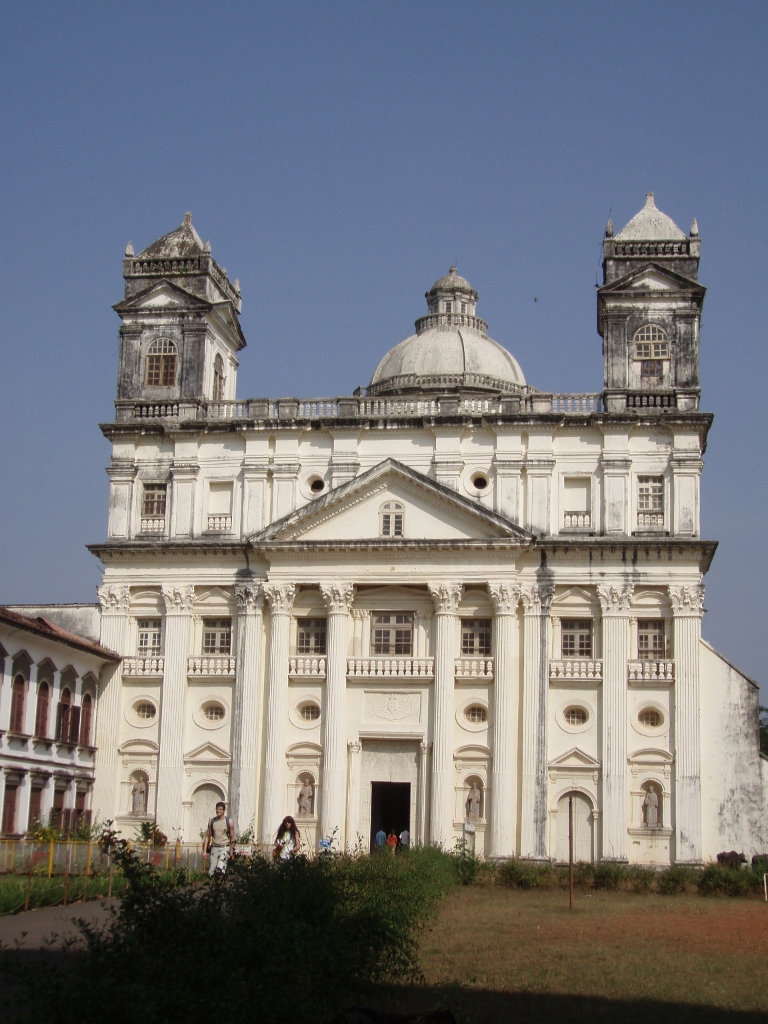 Church of St Cajetan
Church of St Cajetan
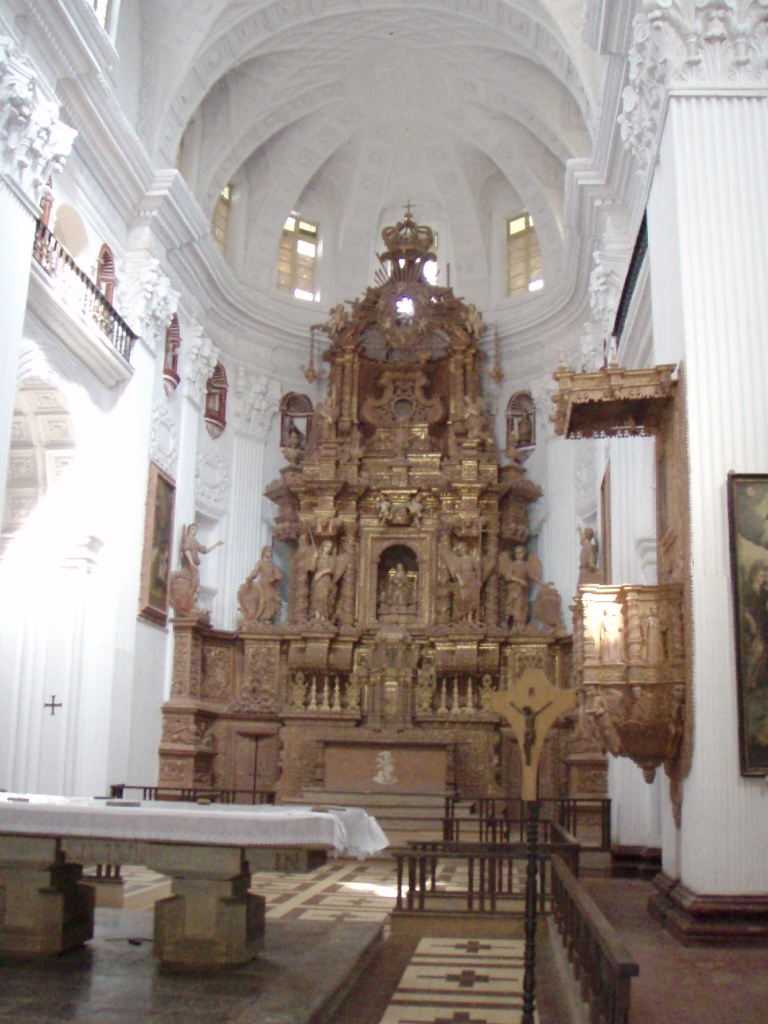 Church of St Cajetan, the altar and the pulpit made in carved wood
Church of St Cajetan, the altar and the pulpit made in carved wood
Although Old Goa and its churches are sufficiently important to be in the prestigious UNESCO’s World Heritage List, in this place we also came across modest remains of the Indian culture. Namely, in this part there used to be Adil Shah’s Palace which was even the official residence of the Portuguese viceroys from 1554 to 1695, but unfortunately today one can see only a remnant of a gate that consists of two pillars and the lintel of the gate made of basalt.
In the close proximity there is also the Viceroy’s Arch that was used to go from the port at the nearby river into the realm of the capital. The arch was built by Francisco da Gama, a grandson of the famous Vasco da Gama, who served here as a viceroy from 1597 until 1600.
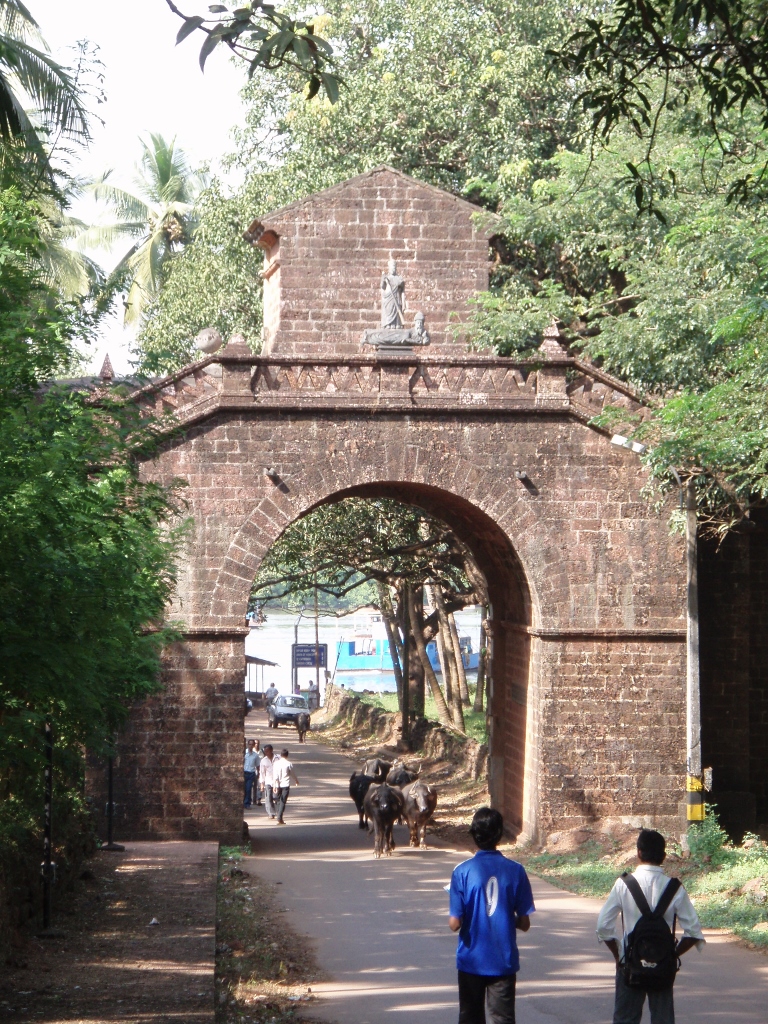 Viceroy’s Arch
Viceroy’s Arch
We passed through this arch to get to the river and I found this river particularly interesting since it constitutes a basis for yet another of my numerous theories about the world we live in which I so like to develop. Namely, the name of the river is the Mandovi. Mandovi is a colloquialism that is sometimes in Serbia used for the Roma people. Of course, I’m not an expert for etymology, but I can’t help but think that at least a part of the Serbian Roma have their origins precisely on the banks of this river. The name of a river from the ancient homeland has remained in the collective memory of at least one part of the Roma and this somehow found its way into the language of the domicile population in the Balkans as the name for the newly-arrived people. Nothing else would actually make any sense in this case. I also remember that once when I worked at a project that dealt with children in a Roma settlement in the south of Serbia, I met a stunningly beautiful girl called Ramayana. In addition to being exceptionally pretty, she was also spotlessly clean (I’m emphasising this because of those who are full of prejudice), but although her wardrobe was quite pretty and brand new, I must admit that it was me who was full of prejudice at that moment and I thought that her parents were probably not that well educated to know about the famous Indian epic after which they had named their child, but I presumed that this was a part of the collective memory, the conscious or the unconscious.
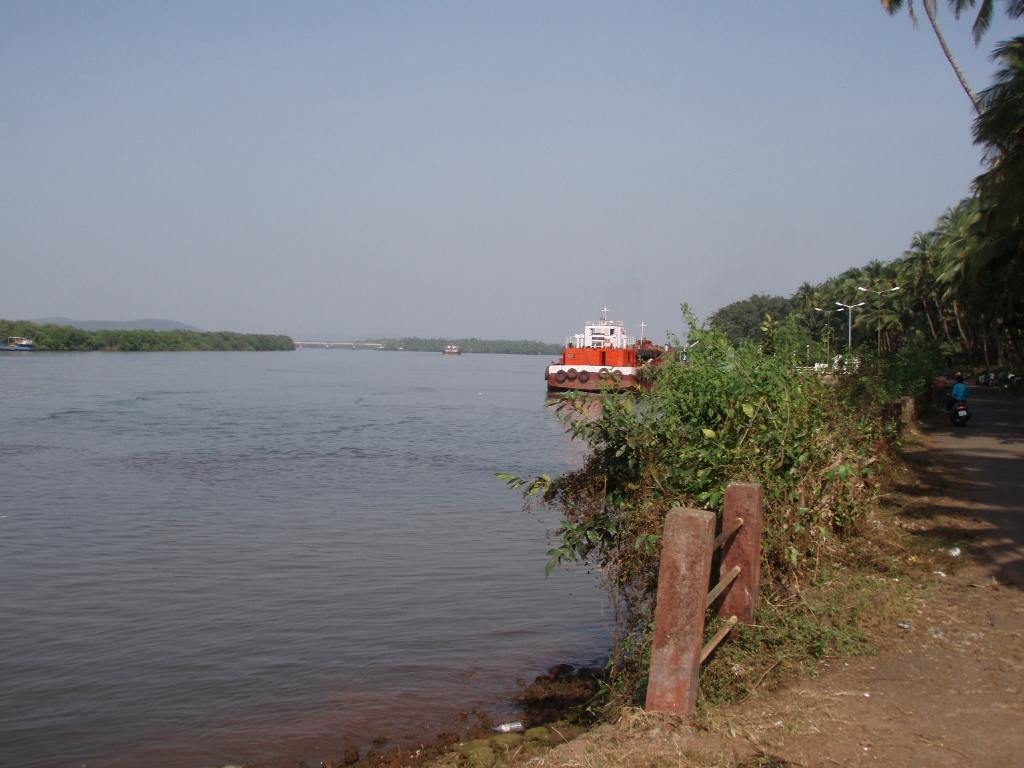 The Mandovi river
The Mandovi river
By the way, the Mandovi enters the Arabian Sea a little farther from Panaji.
Then Sneža and I walked to the Chapel of St Catherine from 1510. This was the only cathedral in Goa until the construction of the Se Cathedral. Although no longer in function and although of significantly more modest dimensions in comparison to the other churches I have mentioned, I found this chapel very pretty and attractive.
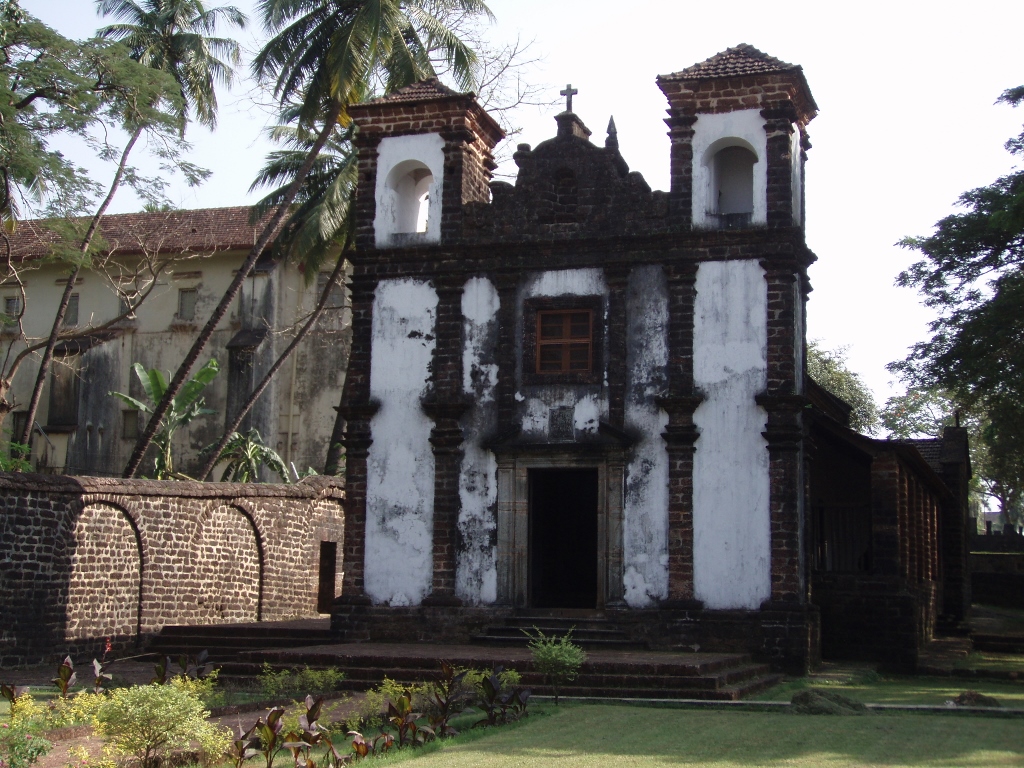 Chapel of St Catherine
Chapel of St Catherine
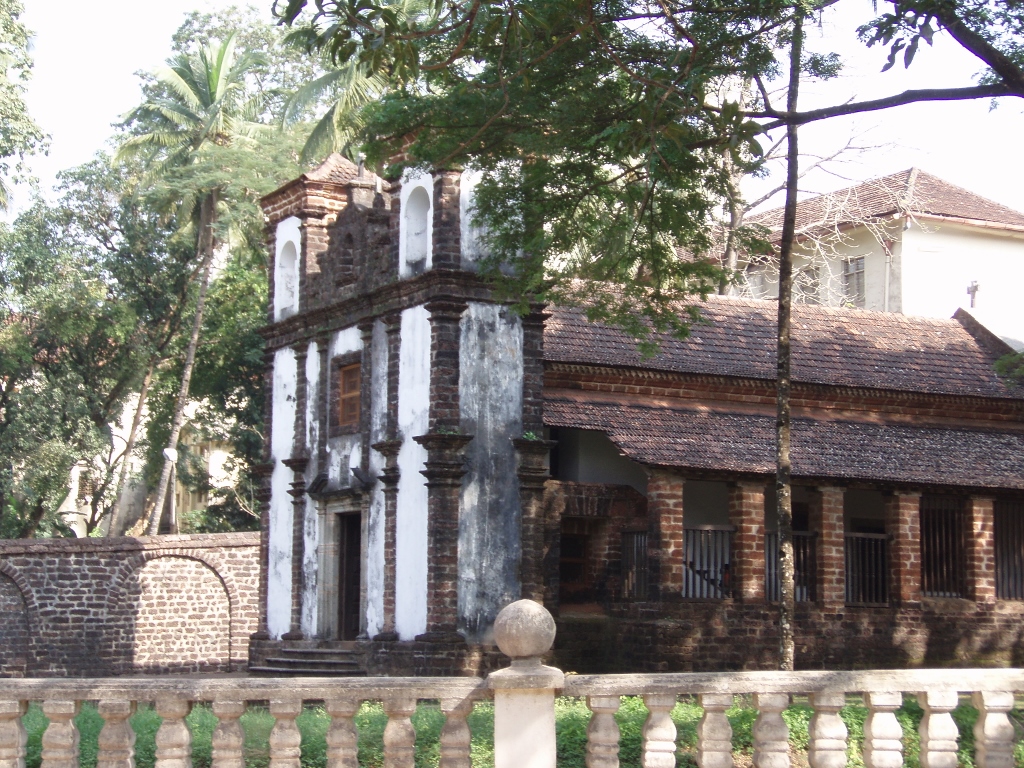 Chapel of St Catherine
Chapel of St Catherine
Despite the fact that there are a dozen churches in Old Goa, we visited only one more and that was the big Church of St Francis of Assisi that is situated right behind the Se Cathedral. Still, before entering the church, we came across a family and there we started to be clearly aware of a custom the Indians have – they simply ADORE having their photo(s) taken. This family did not leave us any name, or contact, or address ... or anything; they just wanted to have their photo taken.
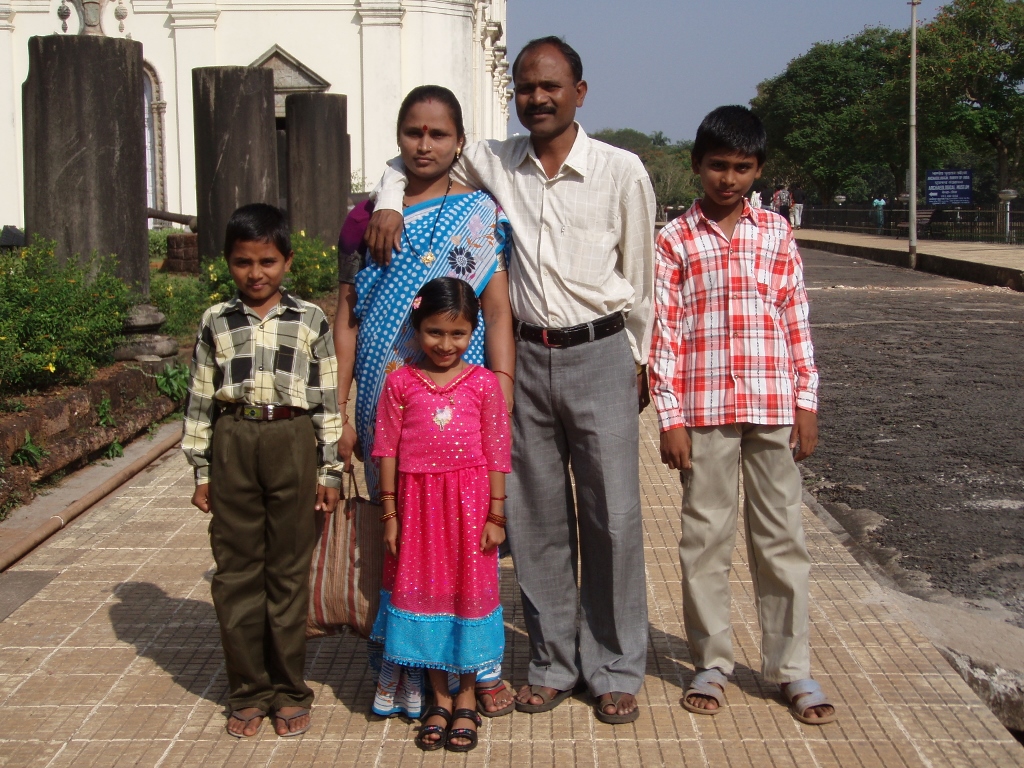 The family that wanted to be in a photo
The family that wanted to be in a photo
And this was taking place right beside the Church of St Francis of Assisi.
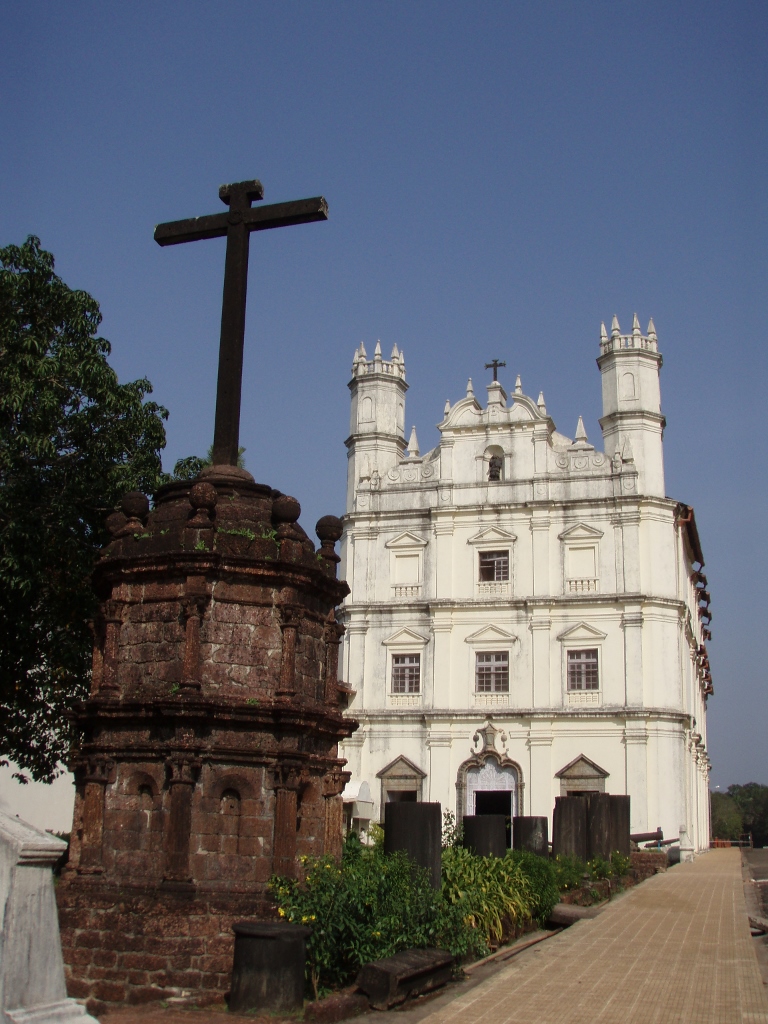 Church of St Francis of Assisi
Church of St Francis of Assisi
The church was originally built in 1521 by Franciscan friars, but the building which exists in this place was actually built in 1661. It has very interesting interior decoration and in this way it stands out among the other churches that we visited on this occasion.
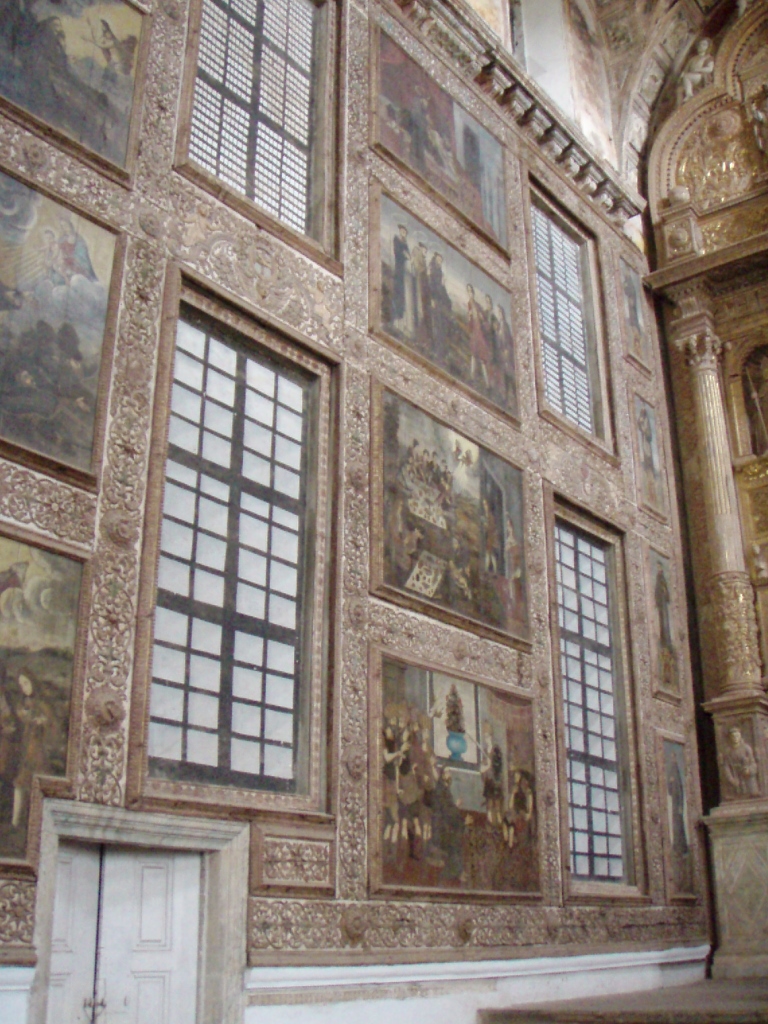 Church of St Francis of Assisi, the interior
Church of St Francis of Assisi, the interior
The point was that the two of us had walked for over 2 hours in 35 degrees C and with very high air humidity, so we finally had enough. On the other hand, despite the excessive heat and the sightseeing under such circumstances, I was gradually starting to feel better physically. My stomach was still wobbly, but I was regaining my strength.
Before returning to Panaji, I still looked back once again and through the palm trees watched the Church of St Francis of Assisi and the Se Cathedral in Old Goa.
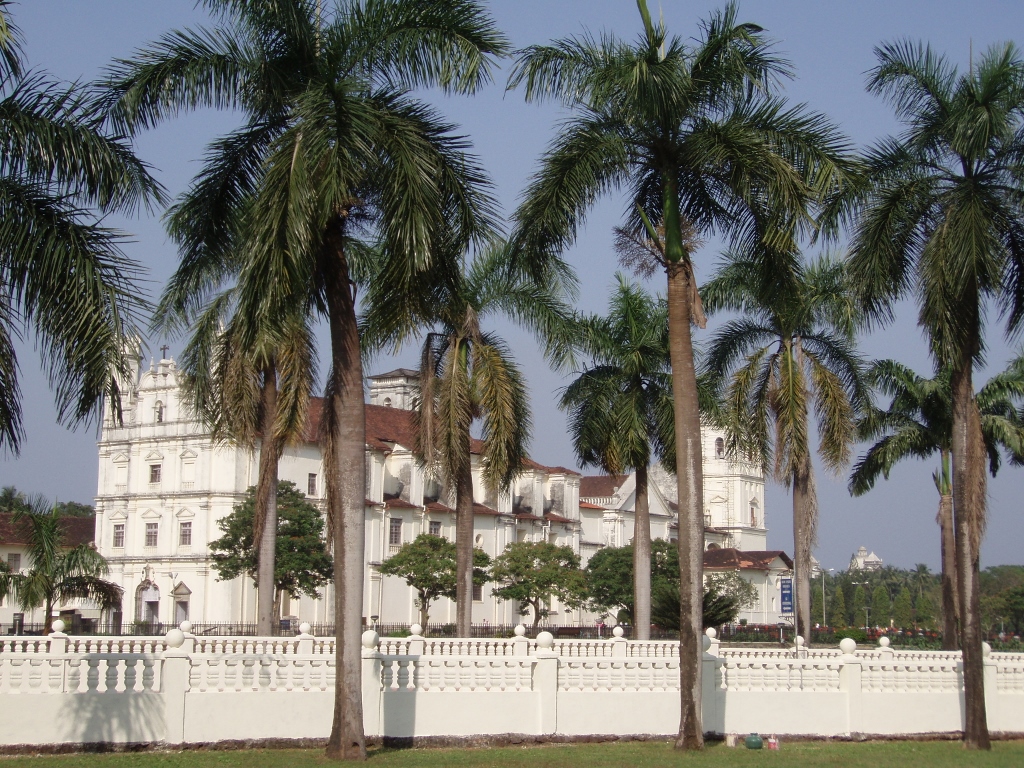 Old Goa: Church of St Francis of Assisi and the Se Cathedral
Old Goa: Church of St Francis of Assisi and the Se Cathedral
Then we returned to Panaji, first to the new part of the town in order to rest and refresh a little there, and then we continued to walk to the old part of Panaji where the hotel we had stayed at was located.
Because of different epidemics, the viceroys moved their official residence from Old Goa to Panaji already in 1759, but this place became the capital of the Portuguese territories in India only in 1843. Although its official name is Panaji, very often it is also called Panjim.
As a part of our stroll, we first passed by the Church of Our Lady of the Immaculate Conception.
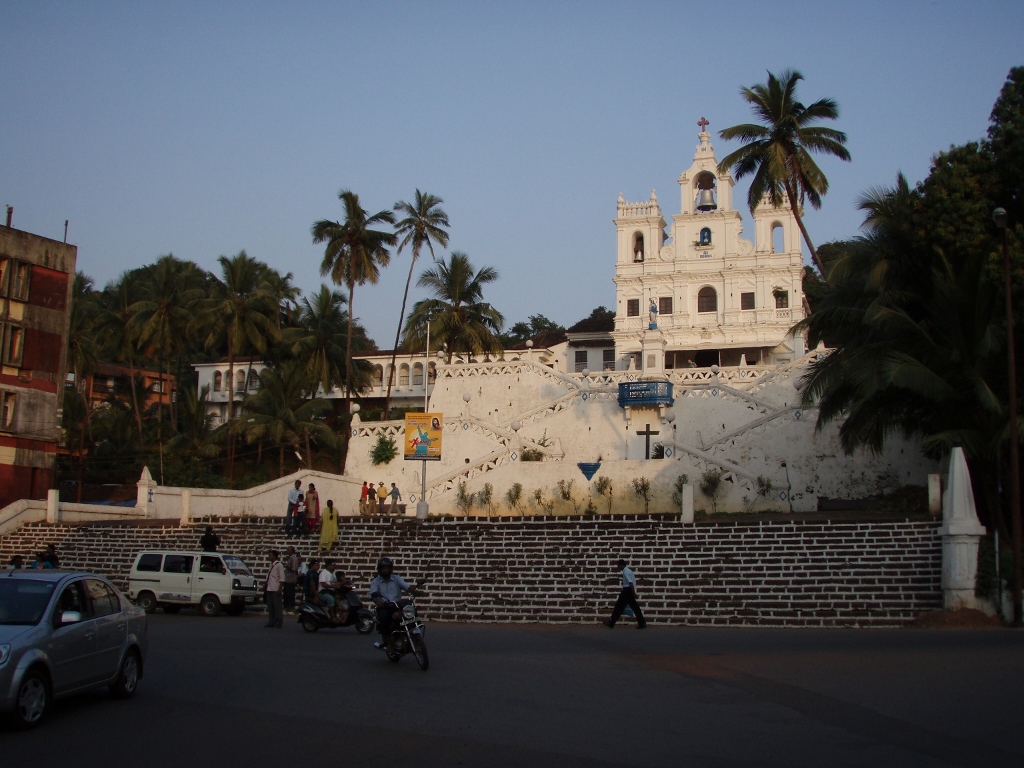 Church of Our Lady of the Immaculate Conception
Church of Our Lady of the Immaculate Conception
Seeing this large number of stairs, we both agreed that we had already seen enough of churches that day, so we just continued walking along the flat area. Thus we came to the old part of the town where there are numerous small streets that cross each other and that are dotted by old houses. The climate, the time, as well as the new customs and habits have done their fair share though.
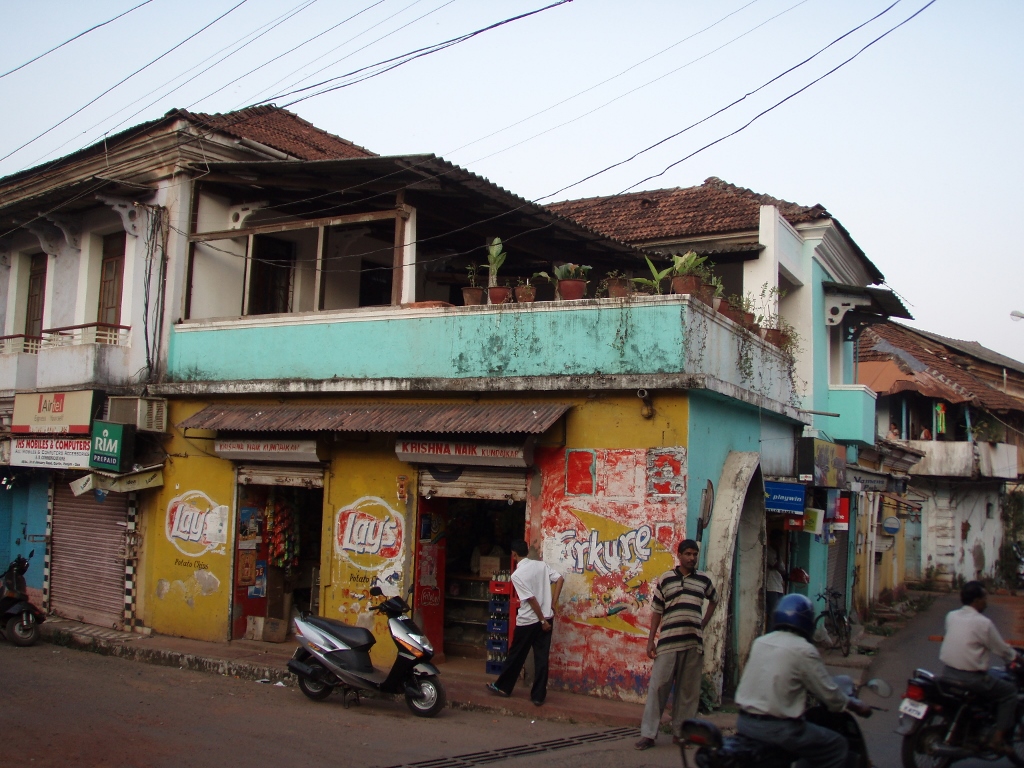 Old part of Panaji
Old part of Panaji
We also passed by St Thomas Chapel from 1849. It was precisely close to this church that the main place of execution during the functioning of the Inquisition was. But, I have already written about this in my previous text.
Now, I preferred to think about the presence of the Portuguese by looking at the houses built in line with the Portuguese style (a house painted in a relatively bright colour, with white trimming) or by seeing the still very much present influence of the Portuguese azulejo tiles, as well as the still kept names/titles in Portuguese.
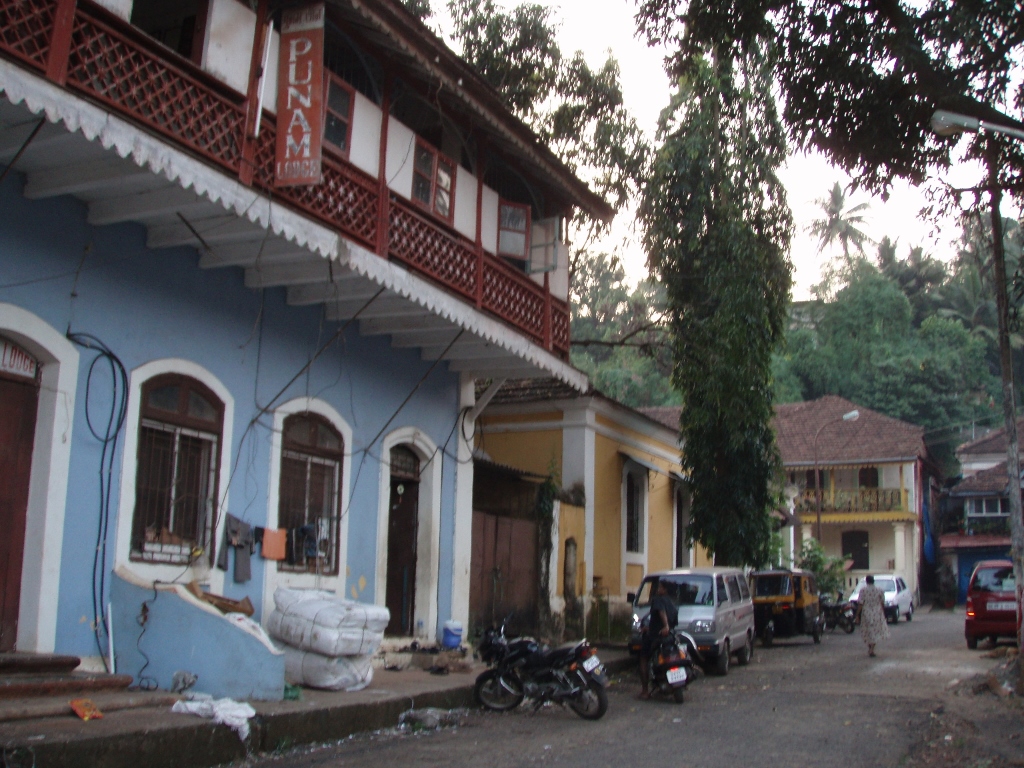 Old part of Panaji
Old part of Panaji
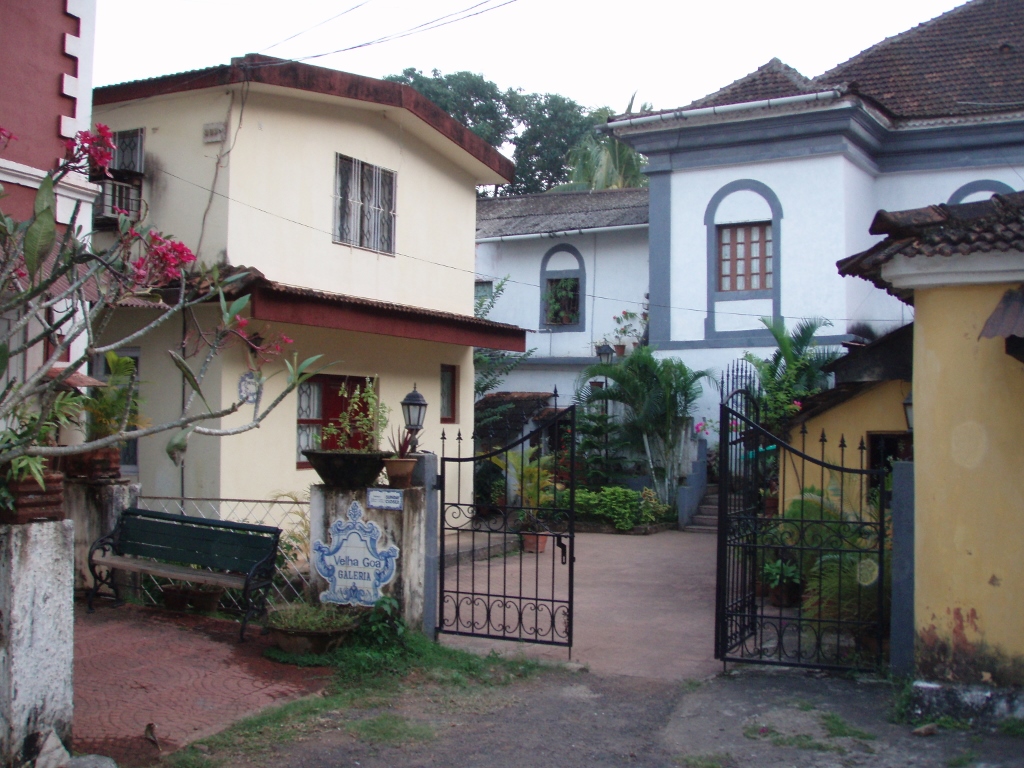 Old part of Panaji
Old part of Panaji
Then we finally returned to our hotel in Panaji where we had dinner and then we transferred to the coach station, since we were to spend the night travelling by coach in order to move to the state of Karnataka and go to the city of Hospet from where we planned to visit some of the famous temples. Here is a reminder of the places we visited while in the federal state of Goa:
My dinner before the coach trip was very light, since I was still worried about the state of my stomach, but luckily I had no more problems with that.
As for the coach, well, that’s something to talk about. Quite a decrepit thing, both from the inside and from the outside, but what was additionally important were the beds. On the inside, the coach was organised in such a way that there were seats that reclined more or less and above them there were beds. Everything was made of leatherette and quite narrow (Sneža and I shared a bed), but we somehow managed to fit on it. Needless to say, everything seemed very shabby.
The coach left on time and I immediately started to get ready to go to sleep, although it was only 8 pm, but I had slept very poorly the night before and still felt rather weak. Regardless of my surroundings within the coach, I only wanted to fall asleep and was ready for it. However ... During the night, two important problems appeared. First, it was pretty cold, so I had to go down to my backpack in order to get a beach towel, since the little blanket I had remembered to take from the airplane was not enough. By the way, taking the small airplane blankets is not decent, but it’s practical. They can really warm you up well during shorter trips or when one is sitting, but here during the night and since I was positioned directly by the window, it did not suffice. The second, quite significant problem was the shaking of the coach. I cannot say “wobbling,” since this was quite violent. It was probably caused by numerous holes on the road and the complete absence of shock absorbers. Still, a man is a funny beast and simply adjusts to the circumstances. Thus, I even managed to sleep in phases. In the morning I started to wake up already around 6 o’clock and the situation in the field was not promising. By this time we were supposed to be in Hospet and yet we had no idea where we were, stuck on the road to such an extent that the driver had turned off the engine. Around us there was also a bunch of other stuck trucks and occasionally groups of people who just hanged around there.
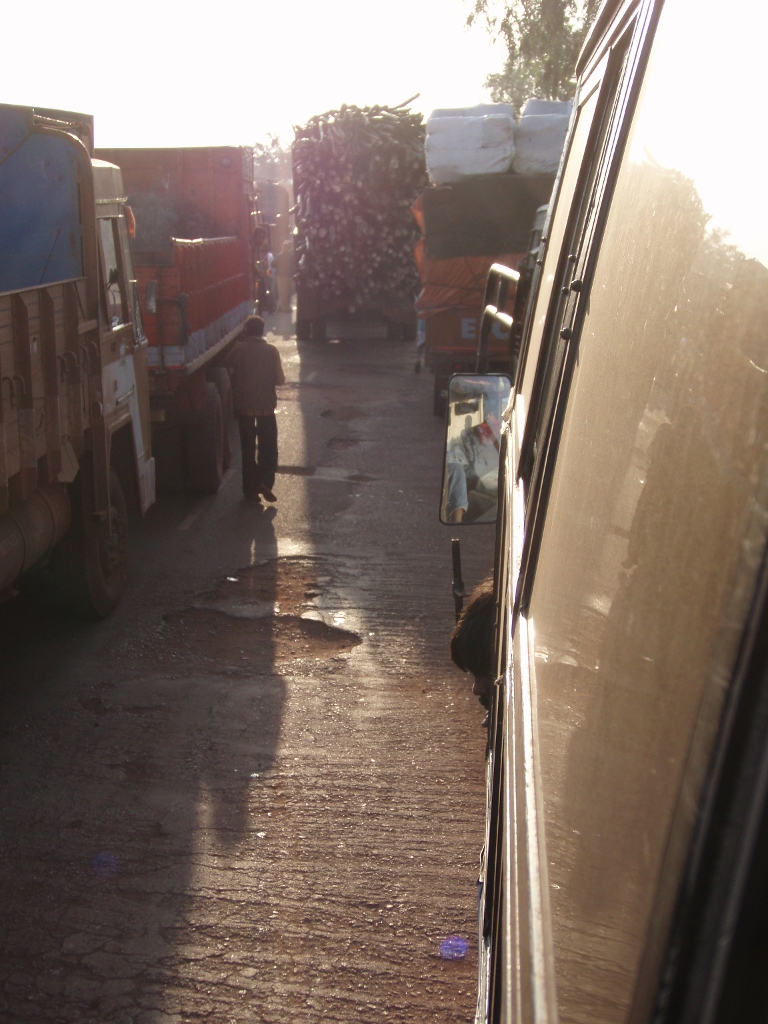 On our way to Hospet; in addition to our not moving, take a note of the road and it will be clear why it was a problem for me to sleep
On our way to Hospet; in addition to our not moving, take a note of the road and it will be clear why it was a problem for me to sleep
But, as the Sun was rising, it started to get warm and I could even lie down beside the opened window.
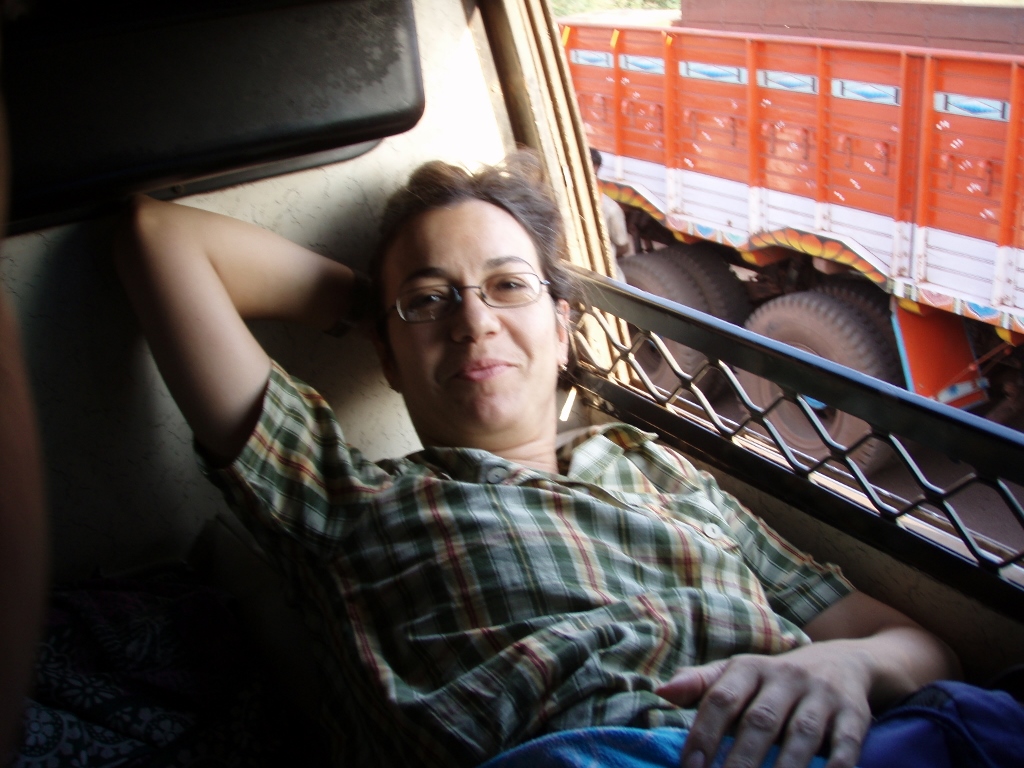 On our way to Hospet; taking into account the circumstances, I don’t even look that bad
On our way to Hospet; taking into account the circumstances, I don’t even look that bad
So, we continued to stand there for an hour or two and then it all started to move slowly and with an incredible skilfulness of those drivers, the crowd dispersed and our coach continued with its journey.
Having in mind the experience we had when we first arrived in Goa, this time we had booked the accommodation in Hospet and our plan was to get off right there, go to our hotel and start with the sightseeing from there. However, we were very lucky to meet two Italian women who, like the two of us, planned to visit the local site of Hampi. Since the coach we were on after Hospet continued to Hampi that is only some 13 km away and was already significantly late in its arrival, in order to better use the remaining part of the day, these two Italians left their luggage at the office of the coach operator in Hospet while intending to continue on the same coach to Hampi. Although the two of us had the reservation in Hospet, we decided that it was better if we did exactly the same and not to take our things to the hotel first, starting our sightseeing from there, since we would waste a lot of time in this way. When the two of us made up our mind in this respect, the resourceful Italians also suggested that we jointly rented an auto rickshaw in order to visit Hampi and then to return by that same auto rickshaw to Hospet later in the day. So we did it as they had proposed.
When we finally reached the terminal in Hampi that is located near the active temple Virupaksha, we got off there and after some negotiations with one of the local drivers, we moved to his auto rickshaw. The auto rickshaws, which are in some countries called tuk-tuk, are actually tricycles that consist of the front seat and the handlebars like in the case of a motorbike, while in the back there is an upholstered bench that can be relatively comfortably occupied by two people. Everything is covered by a canopy. Behind the small bench there is also some space that can be used as a tiny luggage compartment and most often Sneža and I would put one big backpack there, while the other one would stay with us on the bench. Of course, all of this is of a rather small size and quite cramped.
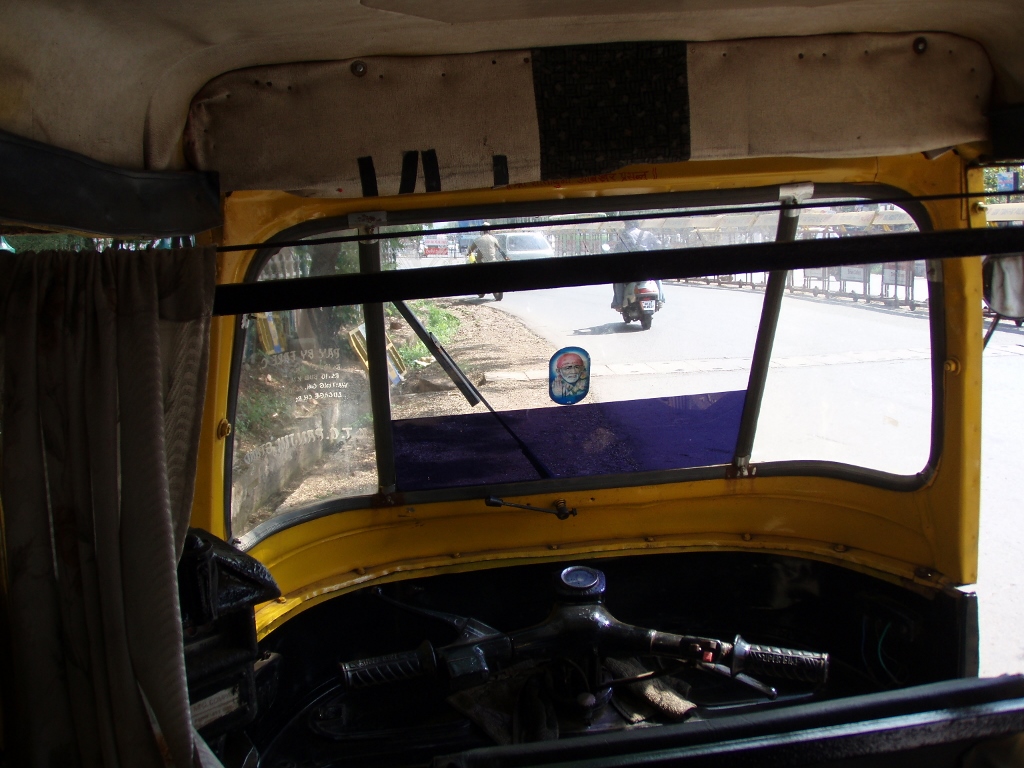 An auto rickshaw from within
An auto rickshaw from within
So, it is cramped even for only two of us and on this occasion there were four women, none of us small, so we agreed that three should squeeze in the back, while one would share the front seat with the driver. Then we would rotate in that front position in order to make it fair to all of us.
Our visit to Hampi lasted for around 4 hours, since some places, that is, the temples and different other structures, are as much as a couple of kilometres one from the other. The site is fantastically beautiful and it would really be great if one had at least one whole day and then to visit the entire complex at leisure and hopefully well rested. Still, it was not bad for us either, despite the mode of transportation.
But, to begin with, we admired Virupaksha Temple that has been active since the 7th century, but the temple that we see today was built in 1442 during the Vijayanagara Empire. On its east side there is an entrance above which rises an impressive tower called the gopuram that is 50 metres tall. The temple is dedicated to Virupaksha, one of the incarnations of God Shiva, who is the consort of the local Goddess Pampa. There, this was a good introductory lesson into the Hindu religion. While actually, unless you were born and raised as a Hindu, nothing is clear who’s with whom, when, in which incarnation and what their name was then.
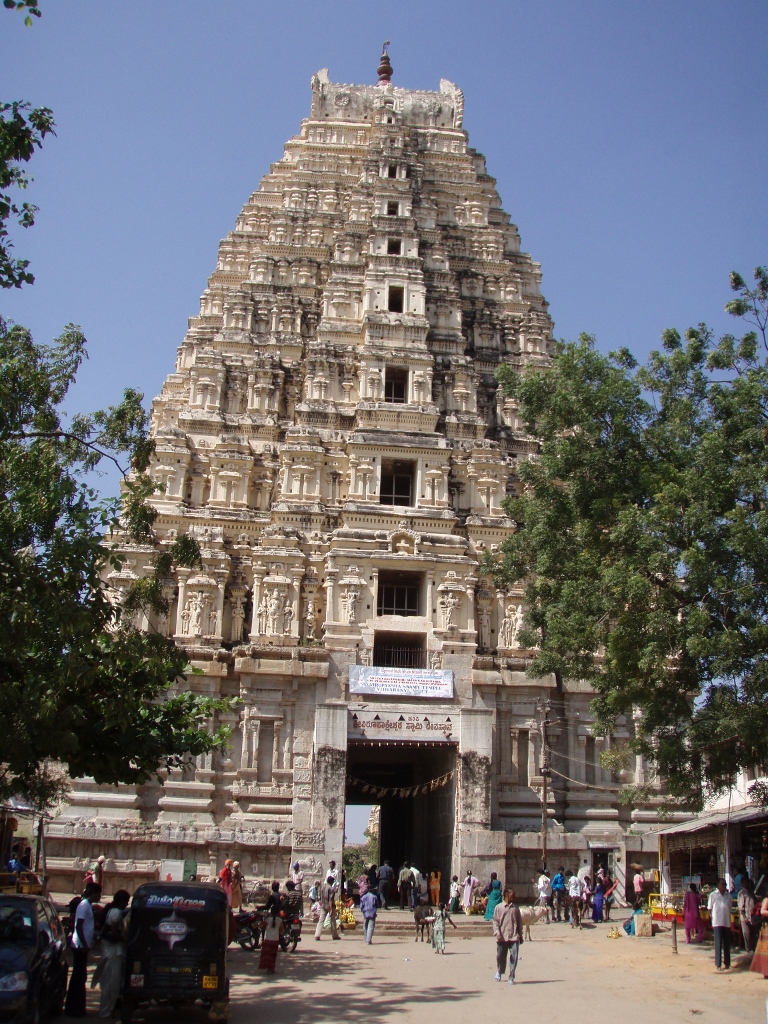 Gopuram, the entrance tower, Virupaksha Temple
Gopuram, the entrance tower, Virupaksha Temple